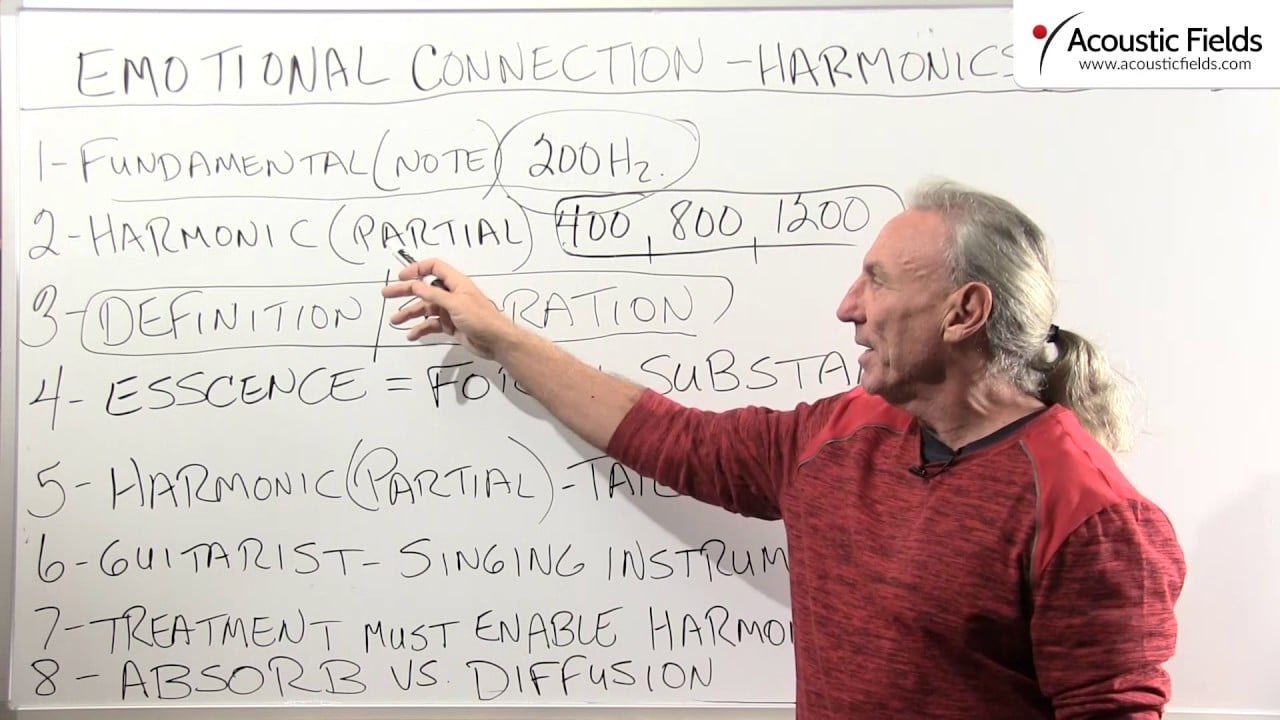Today we’re going to talk about that emotional connection to music. I mean that’s I think the main reason a lot of us go through the trials and tribulations we do in our rooms, trying to get the speakers to sound good, trying to get the amplifiers to sound good, trying to get all the equipment to synergize together if you will and create some kind of emotional connection to the music. Some of us do a little bit better than others, I think we all know the limitations of what we have to work with, our speakers and our amplifiers but one of the key determinants we use in setting up rooms and helping people out is the emotional connectivity. It doesn’t really matter a lot of times if it’s right or wrong, it’s what’s right for you emotionally.
I mean do you feel involved with the musical presentation in your room? Do you feel like you know you’re a part of the presentation? Do your speakers disappear? Do you not see all the room treatment in your room and realize that it’s all for the benefit of sound. So let’s break down a little bit about that and step by step so we can kind of get an analytical feel if you will for that process. So we’re all familiar with fundamental notes, it’ll see all the notes on a piano keyboard, let’s use 200 cycles as our example. So the fundamental note is 200 but then we have all these partials which are the harmonics, the residences if you will from that tone so we want to make sure that we focus on these for our emotional connection to the music. Yes we need the note because that gives birth to the partials and the harmonics but we want to make sure we treat our rooms for these because this is really where the emotion lies.
We must have a really good definition in separation between the fundamental and the harmonic, that’s really the key to the situation because we’re going to go back to my old statement about essences, form and substance. So form is the fundamental but the real substance is in the harmonic, here’s another word for it, tail. You hear a lot of musicians use this word here tail for the harmonic and we really have to design our room for the tail or the harmonic because that’s really what we want to connect with emotionally. And a good example of that, I watch a lot of guitarists play their instruments and your really good guitarist like Santana, BB King, Clapton any of those guys they really get the guitar singing, they really want to turn it into a vocalist so to speak.
So they want to get their guitar singing, make it more human okay. Well making it more human connects back to the fundamental and the harmonic and getting it singing gives it more emotion. So if you watch how they play their goal is to make it sing, even though they can’t sing their guitar can so that’s a thing that we must do. Now on the treatment side how do we do that? Well we have our two technologies, absorption and diffusion and I see a lot of people using absorption and that’s good, that’s good but you have to be careful with absorption and the harmonics because there’s a tendency to kill the harmonic with too much absorption. So you want to be really careful, get a nice balance in your room of absorption, get your reflections managed, balance them out with the direct energy and then use diffusion to add some air and separation to the harmonic. So it’s a balancing act as always between absorption and diffusion so both technologies must be used, don’t use one too much. In our Studios we absorb to the point where there’s real strong definition then we absorb just a little bit more and then we add diffusion and that gets the harmonics really shining and coming through in the presentation.
—
This is an unedited transcript from our video series from Acoustic Fields. There will be some errors in grammar and sentence structure that occur during this translation process.
For complete understanding and comprehension, please view the video which is included in this text. For any additional information regarding this topic or others relating to room acoustics, please contact us directly at:
P: 520 – 392 – 9486








The discussion on ductwork noise transmission from Acoustic Fields highlights crucial aspects of HVAC system acoustics. The movement of air…
Great build plans. thank you Denis
You must use absorption. Never place a chair against a wall.
A friend and I built several diffusors using these plans and they turned out absolutely beautiful. Very good instructions and…